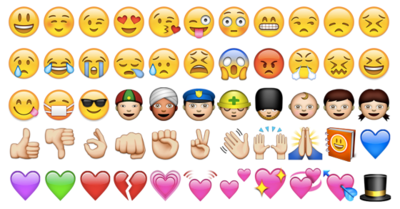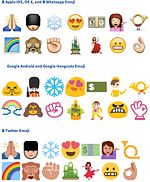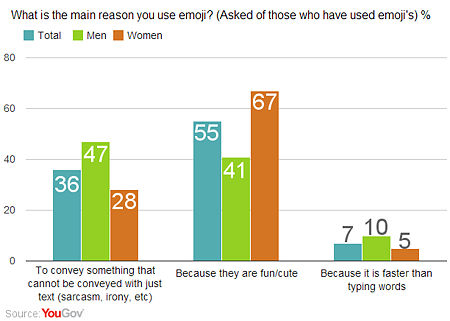Emoji
From DigitalRhetoricCollaborative
In Japanese, the word emoji literally means “picture” (e) and “character” (moji) and is defined as “a small digital image or icon used to express an idea, emotion, etc., in electronic communications” (OED). The emoji first appeared in Japan in the late 1990s and have since spread across the world. The icons are separated amongst different categories and occasions specific to Japanese culture and each character “has an official named, defined as part of the Unicode standard”. Unicode is “a computing industry standard for the consistent encoding, representation, and handling of text expressed in most of the world’s writing systems” (Wikipedia).
The “alphanumeric-sized graphics” are used in text messages, tweets, emails, webpages, and other digital mediums. Emojis are broadly used in computer-oriented communication as substitutes for the nonverbal, emotional expressions unidentified through digital communication. The standardized images are expressed through a specific keyboard designed and developed by scientists and engineers. The emojis are used to specify or in addition to a certain emotion. They can also be used to replace or reiterate a concept, action, or idea.
Contents |
History
Although Unicode 6.0 encoding with emoji was unavailable on iPhones until November 2011, the emoji first appeared in Japan around 1998 or 1999 when the use of picture messaging first was used as a way to communicate by Shigetaka Kurita. The Japanese wireless, mobile company, DoKoMo, was the first to discover the technology behind the emoji and how to relay the message in a single character. The impact of this discovery was huge due to text messaging character limits. The initial set of characters included 172 emoji icons created to simplify multimedia messaging and contribute additional features to electronic communication.
In 2011, Apple’s iOS operating system released the Apple Color Emoji keyboard. Other companies, such as Android, also adopted the emoji phenomenon after the increasingly wide popularity. Microsoft further expanded the use of emoji with the addition of monochrome Unicode emoji coverage to the Segoe UI Symbol system font in Windows 8 with color later added in Windows 8.1.
Emoji versus Emoticon
Emoticons were created before the emoji in 1982 at Carnegie Mellon through the use of simple punctuation combinations. An emoticon is “a representation of a facial expression formed by a short sequence of keyboard characteristics (usually to be viewed sideways) and used in electronic mail, etc., to convey the sender’s feelings or intended tone” (OED). In other words, where an emoji is a specific, predefined icon or image, emoticons are an assortment or combination of punctuation marks used to represent a facial expression, etc. For example, an emoticon may look like :-), but an emoji looks more like ![]() .
.
Character Definitions
Emoji’s are predefined and their exact, official definitions can be found in the [Emojipedia] (http://emojipedia.org). The emojis are separated into categories such as people, nature, food and drink, celebration, activity, travel and places, objects and symbols, and flags. Specific occasions are also classified as:
- Australia Day
- Bastille Day
- Birthday,
- Canada Day,
- Chinese New Year,
- Christmas,
- Cinco de Mayo,
- Dragon Boat Festival,
- Easter,
- Fall/Autumn,
- Father’s Day,
- Festivus,
- Graduation,
- Guy Fawkes
- Halloween,
- Hanukkah
- Independence Day
- Mother’s Day
- New Year’s Eve, Olympics, Queen’s Birthday, Spring, St. Patrick’s Day, Summer, Superbowl, Thanksgiving, Valentine’s Day, Wedding/Marriage, Winter, Winter Olympics, World Cup, and World Emoji Day.
Why People Use Emoji
Future
Apple has revealed a new standard of emoji characteristics, which include a “variety of ethnicities and family types in the latest beta versions of iOS (for iPhones and iPads) and OS X (for Macs)” (Eler). The standardized emojis are currently limited to a yellow skin tone. However, in recent news, Apple announced that the user will be able to alter the skin tone of their emoji to better represent the diverse cultures and colors of our world. The new feature is attributed to “a change in the Unicode standard’s “skin tone modifier” (Eler).



